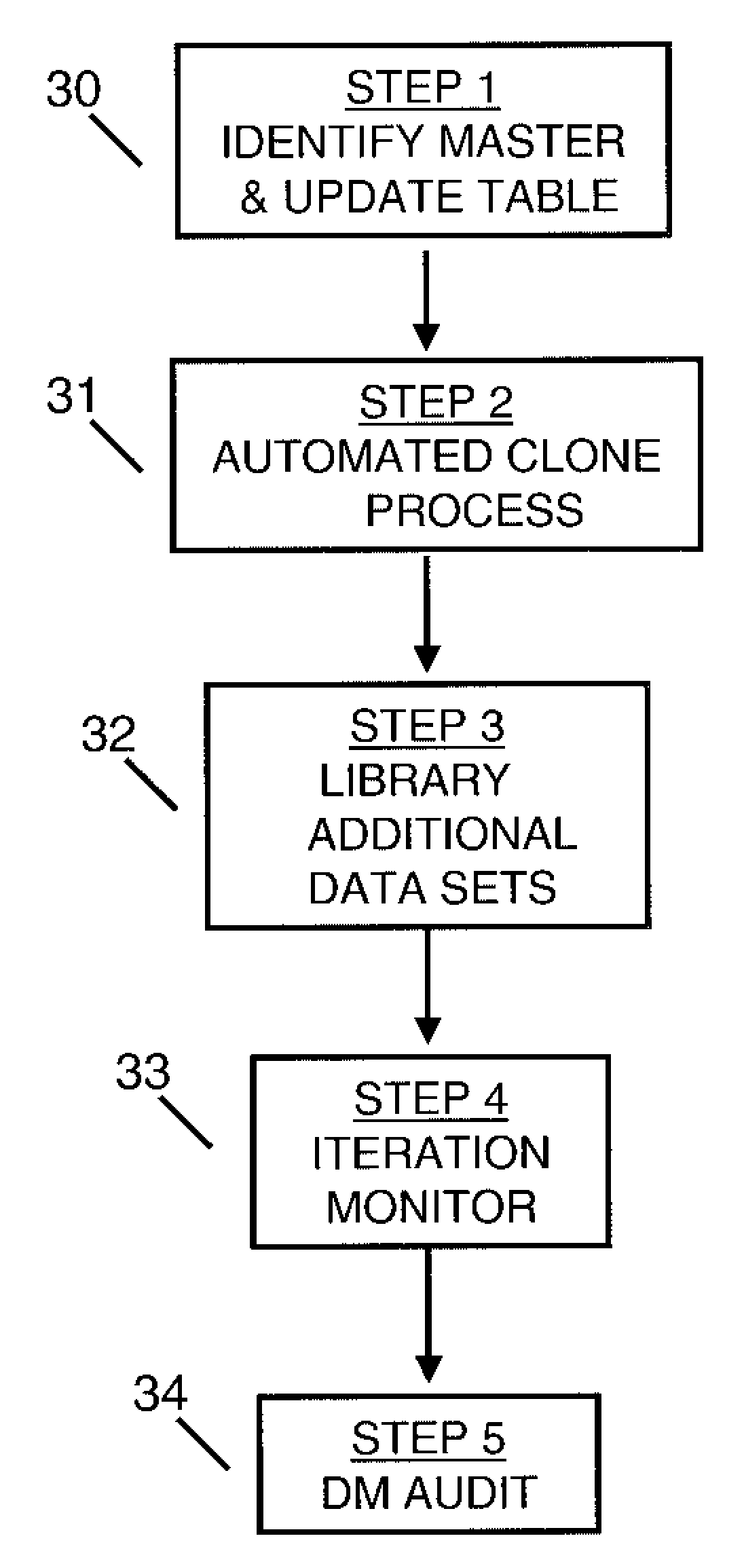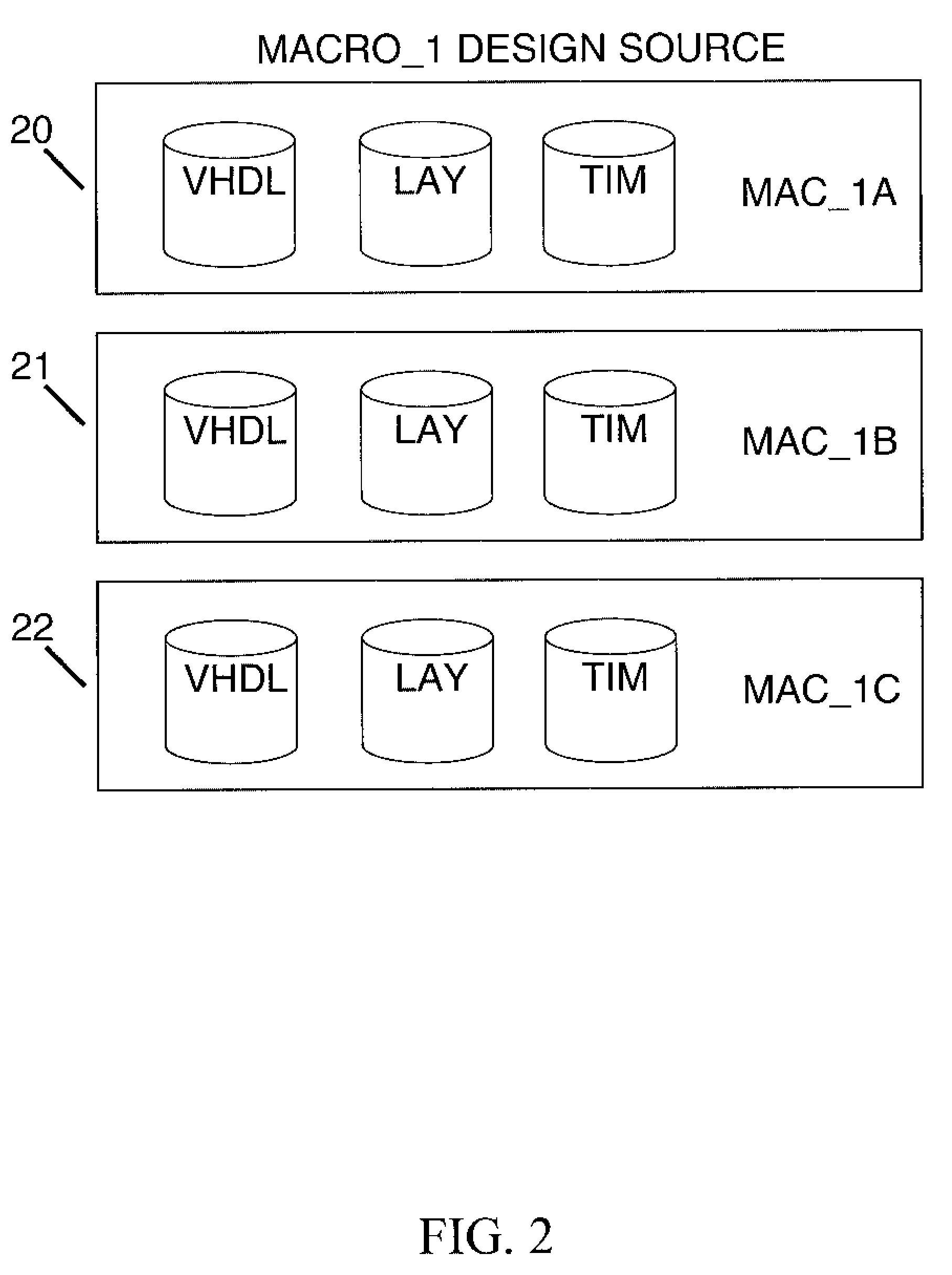Method for replicating and synchronizing a plurality of physical instances with a logical master
a technology of physical instances and logical masters, applied in the field of improving the management of design data of integrated circuits, can solve the problems of increasing complexity and performance of those circuits, not supporting the sharing of data sets, and becoming increasingly difficul
- Summary
- Abstract
- Description
- Claims
- Application Information
AI Technical Summary
Benefits of technology
Problems solved by technology
Method used
Image
Examples
Embodiment Construction
[0029]Turning now to the drawings in greater detail, it will be seen that FIG. 1 depicts a typical physical design structure comprising a plurality of physical entities hereafter referred to as macros. These macros defines arbitrary logic structure which typically have a hard physical boundary with absolute dimensions, aspect ratios, wiring layers, and they serve as the lowest level objects in the design hierarchy which participate in floor planning exercises. In FIG. 1, there are 3 unique macros denoted Macro_1 (10), Macro_2 (11) and Macro_3 (12), which exemplify three unique logic design structures. The complexity of the logic structure within a macro is completely arbitrary, so one of said macros could represent something as simple as an Input / Output block while another macro could describe a complex entity such as a memory controller. Each of these macros arc not only unique behavioral blocks, but each macro is instantiated into the design as a unique instance and given the name...
PUM
 Login to View More
Login to View More Abstract
Description
Claims
Application Information
 Login to View More
Login to View More - R&D
- Intellectual Property
- Life Sciences
- Materials
- Tech Scout
- Unparalleled Data Quality
- Higher Quality Content
- 60% Fewer Hallucinations
Browse by: Latest US Patents, China's latest patents, Technical Efficacy Thesaurus, Application Domain, Technology Topic, Popular Technical Reports.
© 2025 PatSnap. All rights reserved.Legal|Privacy policy|Modern Slavery Act Transparency Statement|Sitemap|About US| Contact US: help@patsnap.com



